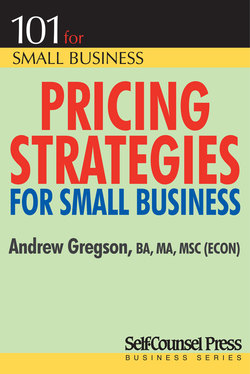Читать книгу Pricing Strategies for Small Business - Andrew Gregson - Страница 39
На сайте Литреса книга снята с продажи.
DIY (Do it Yourself) Estimating
ОглавлениеYou can do it yourself. If the industry you serve has no package to offer you, you can create an estimator package to standardize your costs as follows:
• First list all of the steps in the information gathering stage. What are the types of material, size, finish, and availability? List all the extras. What does your customer expect?
• Then list how you currently price jobs focusing on the steps that must be taken. Do you always strip the roof before installing new tile? Do you always begin with cutting the pipe into 12 foot lengths? Do the raw materials always have to be sandblasted first?
• Apply costs to each step.
• Apply your markup factor to get to a selling price.
• And now the most important step — the virtual trial run. Review previous jobs that worked out well and where you made money. Punch in all those numbers.
All these steps could be taken by a software developer and can be incorporated into a spreadsheet program or kept on paper.
Now comes the hard part. As you use the paper system or the spreadsheet, you have to review and refine and update as you go. If you find that allowing 45 minutes for sandblasting is too little now that old Fred has retired and young Tom is doing it, then you have to change the value for the minutes or risk losing profit. As the price of material changes or new methods or equipment is used, the procedure will need to be renewed. This is, in effect, the SWAG method perfected, because you are reusing a body of knowledge and information, then you are building and adding new factors to it as you go.
For an example of creating a DIY estimator for your business (first stage estimating guidelines for a roofing company), see Table 7.
